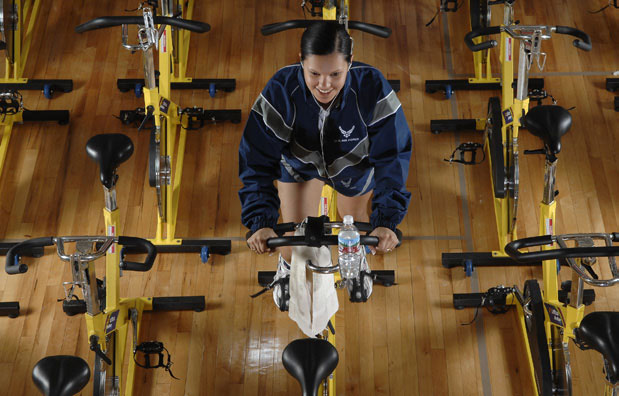Do you get enough exercise? Do you perform 150 minutes of moderate-intensity physical activity every week? Or do you work out for at least 30 minutes 5 times each week? You’ve probably seen one of these questions, or some variation, on your annual personal health assessment. Why is that?
This question gets asked frequently because it gives you an idea of your long-term physical health. Those who get at least 150 minutes of moderate-intensity physical activity every week have a much lower risk of obesity, diabetes, cancer, and heart disease—top killers of Americans every year. Inactive people who spend a lot of their day sitting also have a much higher risk of early death from these conditions. The good news is that you can reduce your risk by moving more. Simply sitting less during the day won’t help much, so the real health benefit comes from being more active.
Aerobic physical activity guidelines
It’s important to aim for 150 minutes of moderate-intensity physical activity, 75 minutes of vigorous-intensity activity, or a combination of the two each week. Tip: 1 minute of vigorous-intensity physical activity counts as 2 minutes of moderate-intensity activity.
Intensity levels
Moderate-intensity physical activity should be fairly strenuous. On a scale from 1–10, it’s a 5 or 6. And it should be hard for you to talk during exercise. Moderate-intensity activities include:
 Fast walking (3–4 MPH)
Fast walking (3–4 MPH)- Swimming
- Biking (slower than 10 MPH)
- Dancing
- Yard work or housework
Vigorous-intensity physical activity is even harder. On a scale from 1–10, it’s a 7 or higher, and you shouldn’t be able to hold a conversation during exercise. Vigorous-intensity activities include:
- Running or jogging
- Swimming laps
- Fast biking
- Hiking
- High-intensity interval training
Resistance training guidelines
The additional health benefits from resistance training include increased muscle mass and strength, increased bone mass, and improved ability to do daily tasks. Do resistance training exercises that target all major muscle groups: arms, shoulders, chest, back, abdomen, legs, and hips. For health benefits, do at least one set of 8–12 repetitions for each exercise and slowly increase the weight and number of sets over time. See HPRC’s "Guidelines to Progress your Physical Training over Time" for more information. The intensity of the exercises should be moderate or higher, meaning that the last 3 repetitions of the set become very difficult while maintaining proper form. Resistance training activities include:
- Lifting weights
- Bodyweight exercises
- Exercises with resistance bands
Benefits
Regular exercise works for more than just keeping you alive longer: It helps you feel alive too. It reduces your risk for cardiovascular disease, diabetes, and cancer. Physical activity also helps prevent depression and anxiety, and it can help you manage related symptoms. In short, exercise helps make you more resilient, able to tolerate high stressors, recover, and grow from them. When staying active can touch just about every aspect of your physical and mental health, it starts to make sense why many experts say, “Exercise is medicine.”
Learn more at our “Get into Fighting Weight” guide.
Updated: July 3, 2025
